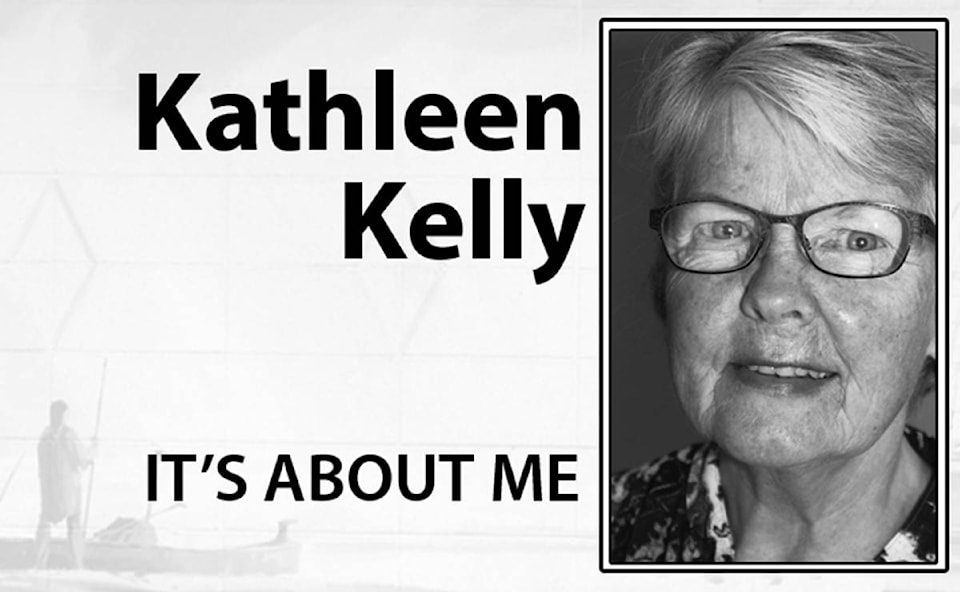In my June column in the Chemainus Valley Courier, I invited you to take a quiz that might indicate to you what kind of a relationship you have with money.
In this July column, I now invite you to think about whether you are a two-way street or a one-way street.
You decide. No quiz necessary for helping you decide, just listen to your inner voice to tell you which kind of street you are.
In the 1997 film My Best Friend’s Wedding, Julia Roberts represents the two-way street character while Cameron Diaz represents the one-way street character.
This is illustrated when Roberts tells Diaz, “I am just chopped liver, but you are creme brulee.” It is a funny scene but profound.
Diaz tries to convince Roberts by telling her “but I can be chopped liver if Dermot needs me to be chopped liver.”
To this response, Roberts emphatically says, “creme brulee can never be chopped liver. Dermot does not want chopped liver, he wants creme brulee.”
Roberts recognizes she has been insincere with both Dermot and Diaz, whereas Diaz has been most sincere in her love for both Dermot and trusting of her best friend, Roberts.
The characteristics Roberts demonstrates as a two-way street person are: duplicity, insincerity, hypocrisy, disloyalty and preditorial ambition.
The characteristics Diaz demonstrates as a one-way street person are: simplicity, sincerity, loyalty, genuineness and trusting.
Generally, there are more two-way streets in cities than one-way streets.
So, too, generally there are more two-way street persons than one-way street persons in the workplace, politics, church organizations, volunteer jobs, sport clubs, as well as non-profit organizations and clubs.
When insincerity, hypocrisy and gossiping is encountered in these situations one is left to wonder whatever happened to integrity.
The TV show What Would You Do? embarrasses people when they see they didn’t act in the face of an injustice because of fear of being different or simply not caring enough to get involved.
The two-way street person is too concerned about how they might be judged if they should really express what they think/feel so consequently, they go along with the majority/status quo to fit in and perhaps be rewarded for their submissiveness, only to later feel like he/she betrayed himself/herself in conforming for the wrong reason.
The fewer participants of this show who actually did get involved in order to help another person explained afterwards to the host they simply had to act.
These fewer participants who acted are one-way street persons. They saw they could make a difference so they acted. They remained true to their own convictions even if their actions were viewed by others as unnecessary, not within the job description, or overstepping company policies.
If you have taken Introductory Psychology or Social Psychology, then you will recognize this TV show, in a sense, illustrates just what the researchers Lantane and Darley (1968) found when they researched why some people get involved while others do not when witnessing the same situation.
They published the findings of their research as the bystander effect or the bystander phenomena.
Viktor Frankl in his book Man’s Search for Meaning (written after his time in Auschwitz) stated who we are comes from a centre deep inside ourselves and not from the situation we are in.
The situations such as businesses, politics, church organizations, volunteer work, club membership, etc. only bring out what is already within the person.
If you read Frankl’s book (or have already read it) you will see how he proved his theory.
Each person has the liberty to choose which kind of street person he/she is without living on the street.
There are pros and cons to each. The pros of the two-way street generally are: more popular, easier to get on with, doesn’t rock the boat, gets ahead in positions and financially more stable.
The cons generally are: lie to look good or to get ahead, gossip or put others down, especially if it bolsters his/her opportunity to get ahead and uninvolved if there is no immediate personal reward.
The pros of the one-way street are: engenders trust even with strangers, enjoys a clear conscience that allows deep sleep all night.
The cons of the one-way street person are: bluntness, rocks the boat and judgmental.
You can decide for yourself if you identify with Julia Roberts’ characteristics or Cameron Diaz’s characteristics.
If you would be the person to get involved and expose abuse or if you would remain uninvolved in righting a wrong. The TV show What Would You Do? and the bystander effect challenges us to think about the person we have been, the person we are, and the person we want to be.
(Kathleen Kelly is a Chemainus resident and author of the book ‘The Tornadoes We Create.’
